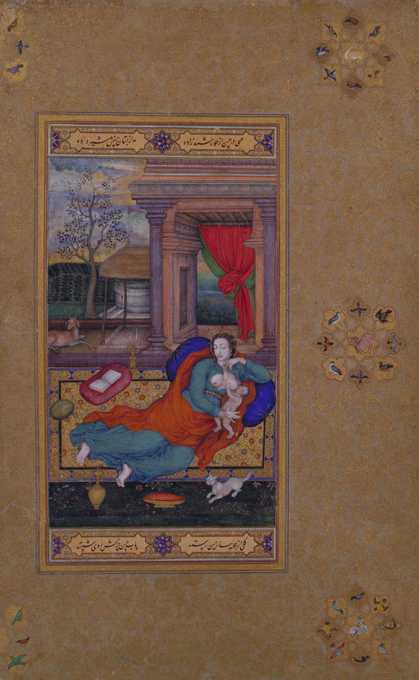

A Madonna and Child, by one of Akbar's court painters, Basavan (c. 1590)
Source:
http://cgi.www.sandiegomuseum.org/cgi-bin/www.sandiegomuseum.org/image.pl?mode=&painting=377760&axis=983839175
(downloaded March 2001)
"The Virgin and Child, Basawan, 1990:293, around 1590, North India. Opaque watercolor and gold on paper. 16 x 10 inches (40 x 24.7 cm), Edward Binney 3rd Collection."
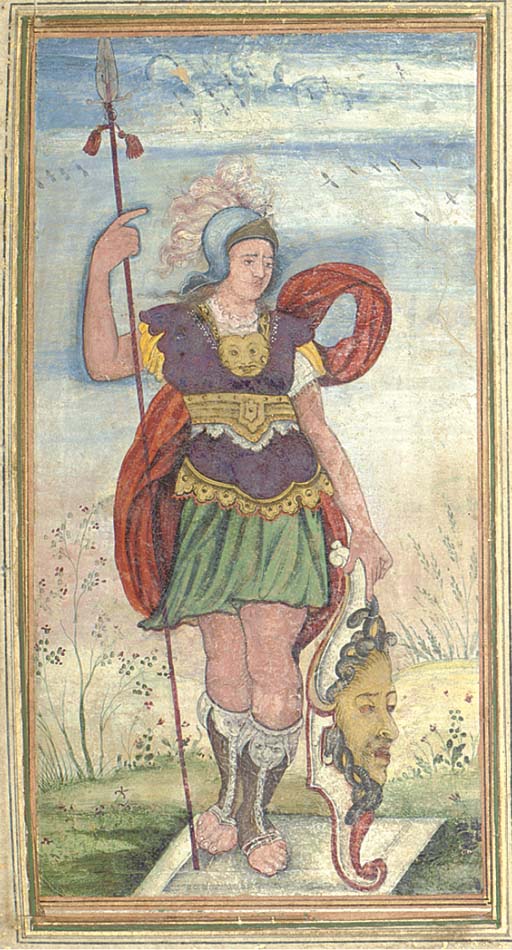
Akbar's painter Keshav Das could even do Minerva (late 1500's)
Source:
http://www.christies.com/LotFinder/search/LotDetail.asp?sid=&intObjectID=4579993&SE=CMWCAT04+124277+%2D1410495013+&QR=M+1+96+Aqc0000900+108446++Aqc0000900+&entry=india&SU=1&RQ=True&AN=97
(downloaded Sept. 2005)
"MINERVA. SCHOOL OF KESU DAS, MUGHAL INDIA, LATE 16TH CENTURY. Gouache heightened with gold on paper, the European-style Minerva stands contraposto, one hand resting on her gorgon-headed shield, the other holding a spear, within a landscape, slightly trimmed, blue, gold, orange, green and white margins, laid on a gold-speckled cream album page, mounted on card, typed note in French pasted to the back. Folio 10¾ x 6½in. (27.6 x 16cm.); miniature: 6 2/3 x 3 3/8in. (16.6 x 8.6cm.).
Lot Notes: One of the more prominent painters in Akbar's atelier was Kesu Das. He could paint in the more standard Akbari mould - with contributions to the Victoria and Albert Akbarnama (circa 1590), but is perhaps best known for his highly coloured copies of European engravings. The resulting studies, in particular of the human anatomy represent a departure from the Persianate cannon of aesthetics. Perhaps because of this he was also one of Jahangir's favourite early artists (Mughal and other Indian paintings from the Chester Beatty Library, London, 1995, p.152).
Examples of his work after the European mode include a signed painting of St Jerome (circa 1580-85) in the Musae Guimet (see Amiuna Okada, Imperial Mughal Painters, Paris, 1992, pl.100, p.97); a signed painting from the story of Joseph in the Chester Beatty Library, and another one ascribed to him in the St. Louis Art Museum (op cit. pls.110,111, the former also in Linda York Leach, 1995, pl.1.233, p.136, and in Milo Cleveland Beach, The Grand Mogul: Imperial Painting in India 1600-1660, Williamstown, 1978, pl.10 recto, p.54)- for which an earlier European engraving prototype is known; a Crucifixion album leaf ascribed to him, in the British Museum (illustrated in J.M. Rogers, Mughal Miniatures, London, 1993, pl.44, p.68)."

Minerva in a view by Basavan, c.1600
Source:
http://www.christies.com/LotFinder/lfsearch/LotDescription.aspx?intObjectId=4892460
(downloaded Mar. 2007)
"MINERVA. MUGHAL INDIA, DRAWING ASCRIBED TO BASAWAN, CALLIGRAPHY BY MUHAMMAD HUSAYN ZARRIN QALAM, CIRCA 1600. Album leaf, brush drawing on paper, a European-style Minerva stands on a pedestal, holding a string instrument and chain, confronted by a baby and surrounded by various articles including a book and a ewer, a later inscription to the bottom of the drawing reads Ustad Basawan or 'Master Basawan', laid down with pale green and pink margins illuminated with gold flowers and gold, red and blue margins with blue rule on blue tinted paper, with gold wildlife on a leafy ground, a short note below, lower margin an inscription contemporary with the signature, verso with four diagonal lines of flowing nasta'liq signed Muhammad Husayn [Zarrin Qalam] similarly margined, ruled and mounted, small localised areas of repair. Miniature 7 x 3½in. (17.8 x 8.9cm); Folio 14½ x 9 3/8in. (36.8 x 23.8cm.)
Lot Notes A note in the lower margin, presumably intended for the binder, translates 'Facing the [painting] of the woman holding a baby in her arm'.
Basawan's skill and independence in copying European engravings and his lifting of Christian iconography as demonstrated in the present example is also clear in two drawings published in Imperial Mughal Painters (Amina Okada, Imperial Mughal Painters, Paris, 1992, nos. 89 and 90, p. 89). Indeed these examples bear great similarity to our drawing, no. 89 in the treatment of the young woman's cloak, which rises above her and no. 90 in the pose struck by the woman and the instrument held in the left hand. Whilst not remaining scrupulously faithful to the iconographic and thematic conventions of European engravings, for example she holds in her left hand not the traditional spear but rather a Persian instrument, several elements are directly lifted from the prototypes. For instance, Minerva does stand in front of a pile of books, the symbol of learning, often associated with the deity.
Basawan worked in a technique called nim qalam designed to imitate the European engravings and in fact grisaille painting, by using black ink and an extremely fine brush."
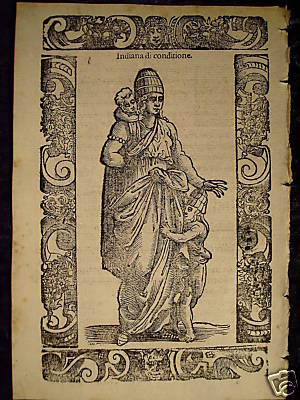 |
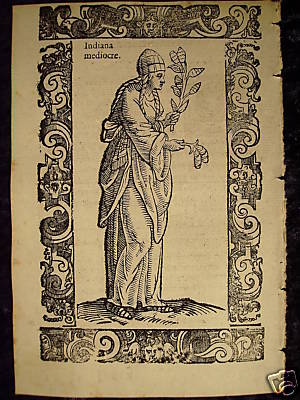 |
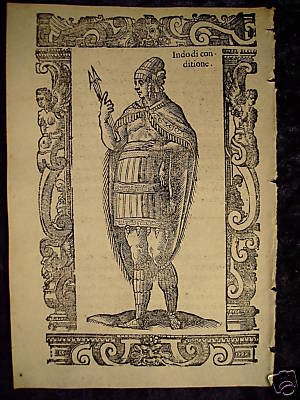 |
== Indian Routes index == Indian Routes sitemap == Glossary == FWP's main page ==